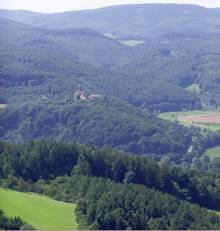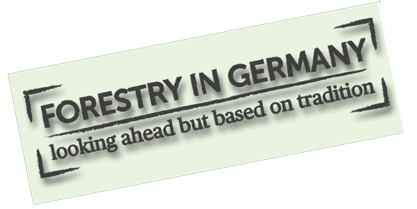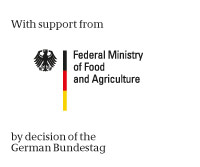Is forestry in Germany still sustainable?
 |
The term of sustainability was first used in 1713 by the German Hans Carl von Carlowitz. In its origin sustainable forest management means, that no more wood is harvested than regrows. The modern principle of sustainability includes various economic, ecological and social components.
Where are the German forests today, if we consider important data and facts such as the development of forest areas or the extent of usage? Do we respect the boundaries of sustainability or do we exceed them?
 |
Forest land with diverse structures
The forest in Germany is neither nationalized nor in the hands of a few large corporations, as in many other countries around the world. A diverse ownership structure forms the foundation for social and economic sustainability, as we understand it today. According to the third National Forest Inventory (BWI3) 48 percent of the forest area is privately owned by about 2 million forest owners. 29 percent of the forest area belongs to the countries. The federal government owns about 4 percent, which mostly consists of areas along federal waterways, highways or military areas. There are forests owned by corporations (including municipal forests) who own 19 percent.
German forest area is increasing steadily
About one third of the entire federal territory is forested. Thus, Germany has a total forest area of about 11.4 million hectares. While the forest areas internationally decline more and more (especially in the tropics of the southern hemisphere), a steady increase in German forest can be observed since four decades, which is due to a controlled, responsible forest management. The forest area has increased by one million hectares in the last four decades. Since the 1990s, the forest area in Germany is growing by an average of 176 square kilometers per year. This corresponds roughly to the area of the city of Karlsruhe.
Rhineland-Palatinate and Hesse have the highest percentage of forest coverage with 42 percent, Schleswig-Holstein with about eleven percent the lowest proportion of forest. According to the latest National Forest Inventory the wood stock in Germany's forests is higher than ever before and in Europe, Germany is the leader of countries rich in forests, e.g. Sweden or Finland. The annual increment in Germany is 11 m³ per hectare - a total of about 121,6 million m³.
Only 87 percent of the annual growth is used. So over-exploitation of the forest does not take place in Germany. This would also contradict the forest and nature protection laws of the Federal and State Governments, various European directives and regulations, and - first and foremost! - the ethos of forest owners.






